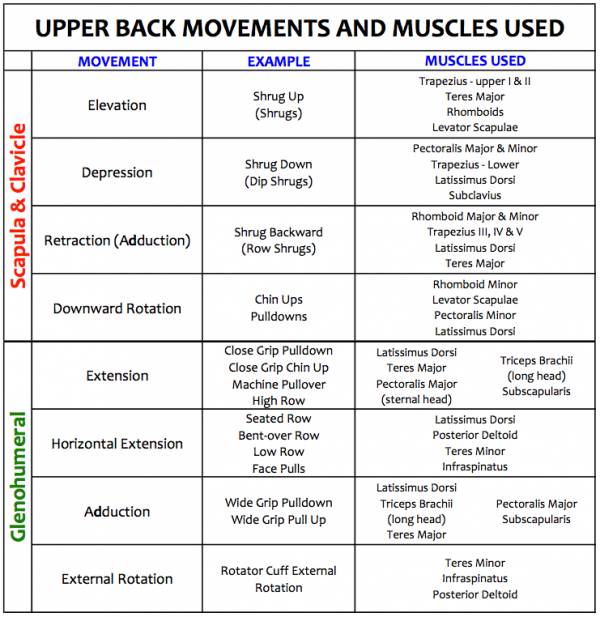A strong upper back is vital to minimize shoulder joint and shoulder girdle injuries. Many athletes and training enthusiasts love the pressing and pushing exercises: bench press, incline press, decline press, dips, and overhead press.
However, to counterbalance those movements and enhance shoulder joint stability, antagonistic pulling-type exercises should be incorporated. If these movements are neglected, the risk of injury is heightened.
I understand pulling movements are not popular or governed by the “I can lift X amount of weight” mentality, thus they can be sadly neglected. “How much can you close grip pulldown or bent-over row?” You never hear that, do you?
So, to strengthen the upper back/shoulder area, minimize injury potential, and augment your ability to optimally execute upper-body sport skills, the following posterior upper-body pulling exercises should be incorporated to counter the anterior pushing exercises most trainees emphasize:
- Wide grip pulldown/chin up to the upper chest
- Close grip pulldown/chin up to the upper chest
- Pullover machine
- High row
- Face pull
- Seated/Bent-over row
- Low row
- Upright row
- Rear delt machine/bent-over fly
- Rotator cuff external rotation
Think of it this way: for every pushing exercise, there should be an opposite pulling exercise. Examples:
- Overhead press – wide or close grip pulldown, machine pullover
- Incline press – high row or face pull
- Chest press – seated/bent-over row, low row, rear-delt machine/bent-over fly
- Decline press/dip – upright row
Now, before we go further it is necessary to know two things:
- It is literally impossible to solely isolate a specific muscle when performing an exercise movement. For example, when performing a side lateral raise to target your delts, both the anterior and medial deltoids are activated along with the clavicular head of the pectoralis major (chest) and supraspinatus (a rotator cuff muscle).
- Related to that point, some anterior muscles are activated when performing traditional posterior/pulling exercises. For example, during a close grip pulldown with the forearms supinated (palms facing you), the sternal head of the pectoralis major and long head of the triceps assist the lats, teres major, and other posterior/pulling muscles.
And then there’s the question of the venerable upright row – where does it belong? It’s a pulling exercise, but it works the deltoids normally involved in anterior/pushing exercises. What a dilemma. Let’s go over a basic tutorial on upper back musculature and kinesiology:
When discussing the upper back musculature, two anatomical points and relevant joint movements need to be addressed: the scapula (shoulder blade) and humerus (upper arm).
Shrug your shoulders up, down, forward, and backward. That is your scapula in action. Move your upper arm in multiple directions. That is your humerus articulating at the glenohumeral joint.
Looking specifically at the upper back development, the following chart reveals the details of movements and involved musculature:

Workout Protocols for Upper Back Musculature
There are many ways to develop the upper back musculature, using an assortment of movements/exercises with a variety of overload protocols. I have provided sample exercise that can be used in single workouts along with a few set/rep scripts that can be applied to them.
Upper back exercise movements for single workouts:
- Wide grip pulldown
- Bent-over row
- Upright row
- Chin-ups
- Low row
- Face pulls
- Seated row
- Close grip pulldown
- Bicep curl
- High row
- Rear delt machine
- Machine pullover
Set/rep scripts options that can be applied to them:
- 2 sets of each exercise at 10-14 and 6-10 rep ranges
- 2 sets of each exercise all at an 8-12 range
- 3 sets of each exercise all at 12-16, 8-12, and 4-8 rep ranges
- 3 sets of each exercise all at a 6-10 rep range
- 1 set of each exercise at a 12-16 rep range
Regarding specific workout days, many options work. Whether you are strength training using a total body workout two or three days per week or using a split routine where your upper body is trained twice per week, incorporate the aforementioned upper back exercises.
Make sure you are balancing all the popular pushing-type exercises with opposing upper back pulling-type exercises. Work them as hard as all your pushes.
This approach will safeguard against shoulder injuries, allow you to achieve balanced musculature, and enhance your ability to better execute sport skills.






